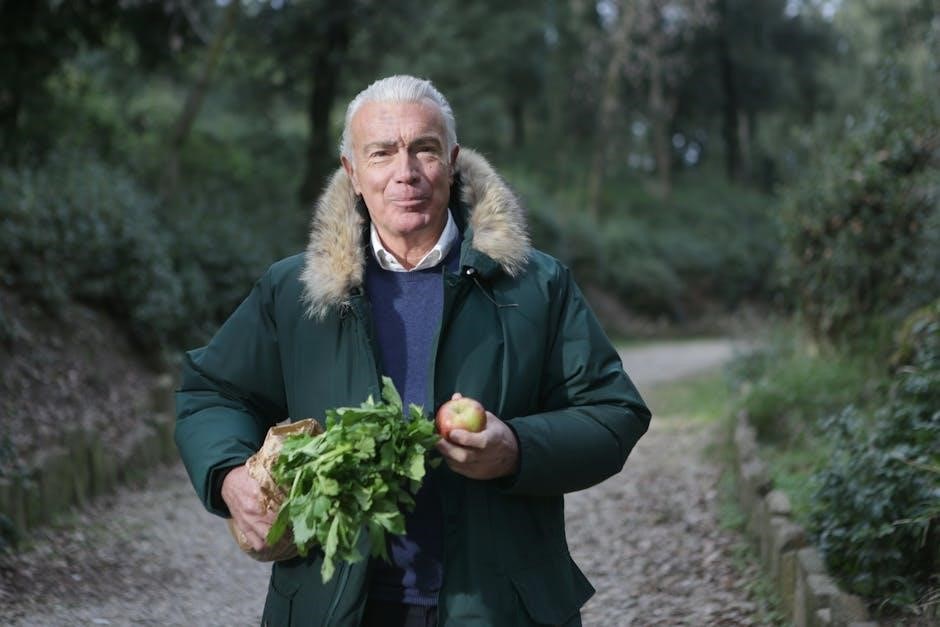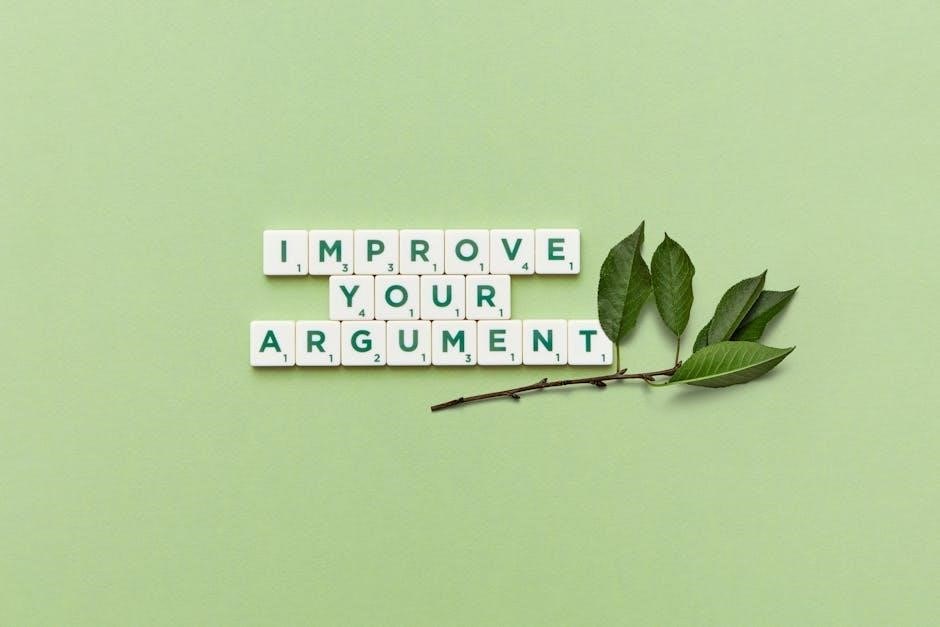USDA Zone 6 covers regions with moderate climates, offering a 150-day growing season. It supports a wide variety of plants, from cool-season crops to warm-weather vegetables, making it ideal for diverse gardening.
1.1 Understanding USDA Hardiness Zones
USDA Hardiness Zones divide the U.S. into regions based on average annual extreme temperatures. Zone 6, updated in 2023, has moderate winters and warm summers, ideal for diverse gardening. Plants thrive in zones matching their hardiness, ensuring survival and productivity. Zone 6’s climate supports both cool-season and warm-weather crops, making it versatile for gardeners. Understanding these zones helps select appropriate plants, maximizing growth and yield in specific areas.
1.2 Key Characteristics of Zone 6
Zone 6 has a medium-length growing season, typically lasting 150 days. It experiences moderate winters and warm summers, with the last spring frost around late March to early April and the first fall frost in late September to early October. This allows for a wide range of planting options, from cool-season crops like broccoli and spinach to warm-weather vegetables such as tomatoes and peppers. The zone’s mild climate and balanced seasons make it suitable for diverse gardening, supporting both annuals and perennials effectively.

Average Growing Season in Zone 6
Zone 6 typically enjoys a 150-day growing season, starting in mid-April and ending in mid-October. This period allows for planting a variety of crops successfully.
2.1 Start and End Dates of the Growing Season
The growing season in Zone 6 typically begins around April 30, after the last frost, and ends by October 15, before the first fall frost. This 150-day window allows gardeners to plant cool-season crops in early spring and warm-weather crops in late spring or early summer. Understanding these dates is crucial for timing plantings correctly and ensuring crops mature before the first frost. This period supports a wide range of vegetables and flowers, making Zone 6 ideal for diverse gardening.
2.2 Tips for Maximizing the 150-Day Growing Season
To maximize Zone 6’s 150-day growing season, start seeds indoors 4-6 weeks before the last frost date. Use cold frames or row covers to extend the season for cool-season crops. Plant fast-maturing varieties to ensure harvests before the first fall frost. Rotate crops to maintain soil health and optimize space. Keep a planting calendar to track sowing and harvesting dates, ensuring timely transitions between spring, summer, and fall crops. Proper planning and techniques can significantly increase productivity within this moderate growing window.

Frost Dates in Zone 6
Frost dates in Zone 6 are critical for gardening success. The last spring frost typically occurs between March 30 and April 30, while the first fall frost happens from September 30 to October 30. These dates guide planting timelines and protect plants from damage.
3.1 Last Frost Date in Spring
The last spring frost date in Zone 6 typically falls between March 30 and April 30. This critical timeframe determines when it’s safe to plant tender seedlings outdoors. Gardeners should wait until after this date to avoid frost damage to sensitive plants. Knowing this date helps in planning the planting schedule effectively, ensuring optimal growth for warm-season crops like tomatoes and peppers. It’s essential to check local weather forecasts for precise timing, as frost dates can vary slightly within the zone.
3.2 First Frost Date in Fall
The first fall frost date in Zone 6 generally occurs between September 30 and October 30. This marks the end of the growing season for warm-season crops. Gardeners should harvest tender plants before this date to prevent damage. Hardy vegetables like kale and spinach can tolerate light frosts, but most crops require protection or harvesting by this time. Planning the fall garden around this date ensures a successful harvest and prepares the soil for winter. Monitoring weather forecasts is crucial for precise timing.

Planting Calendar for Zone 6
A month-by-month guide for Zone 6, outlining optimal planting times for seeds and transplants. Start seeds indoors in late winter, and direct sow in late spring.
4.1 Spring and Summer Planting Schedule
Zone 6’s spring planting begins after the last frost in late April. Start seeds indoors 4-6 weeks earlier for tomatoes and peppers. Direct sow cool-season crops like spinach and lettuce in early spring. By late May, transition to warm-season crops such as beans, corn, and squash. Summer planting peaks in June and July, with continuous sowing of heat-tolerant varieties like zinnias and cucumbers. Ensure soil is warm for optimal germination and growth during these months.
4.2 Fall and Winter Planting Schedule
Zone 6’s fall planting begins in late summer, about 8 weeks before the first frost. Sow cool-season crops like spinach, kale, and Brussels sprouts in August or September. Root vegetables such as carrots and beets also thrive in cooler fall weather. For winter, plant garlic and shallots in October, allowing them to overwinter. Use cold frames or row covers to extend the season for hardy greens. Plan ahead by starting seeds indoors for early spring crops in late winter, ensuring a continuous gardening cycle throughout the year.

Starting Seeds Indoors
Starting seeds indoors in Zone 6 gives plants a head start before the last frost. Begin with tomatoes, herbs, and peppers 4-6 weeks before transplanting outdoors.
5.1 When to Start Seeds Indoors
In Zone 6, start seeds indoors 4-6 weeks before the last frost date, typically late March to early April. This allows plants like tomatoes and peppers to mature properly. Ensure seedlings have sufficient light and maintain optimal temperatures for germination. Proper timing ensures healthy transplants ready for outdoor conditions after the last frost. This method maximizes the growing season and improves crop success in Zone 6’s climate.
5.2 Best Practices for Seed Starting
Use high-quality seed starting soil and soil blocks or trays for optimal germination. Maintain consistent temperatures between 65-75°F for most seeds. Provide adequate light, such as grow lights, once seeds emerge. Water gently but thoroughly, avoiding over-saturation. Transplant seedlings into larger containers before moving them outdoors. Harden off seedlings 7-10 days before transplanting to acclimate them to outdoor conditions. Handle seedlings carefully to avoid damaging roots or stems. These practices ensure healthy, robust plants ready for Zone 6’s growing season.

Planting Vegetables in Zone 6
Zone 6’s 150-day growing season supports a wide variety of vegetables, from cool-season crops like broccoli to warm-weather favorites like tomatoes, making it ideal for diverse gardening.
6.1 Spring Vegetable Planting Guide
In Zone 6, spring vegetable planting begins after the last frost date, typically late April to early May. Start seeds indoors 4-6 weeks prior for crops like tomatoes and peppers. Direct sow cool-season vegetables such as spinach, peas, carrots, and lettuce in early spring. Broccoli and onions also thrive when planted in Zone 6’s spring. Ensure soil is well-prepared with compost, and plant at the correct spacing to maximize growth. Mulching helps retain moisture and suppress weeds, promoting healthy development.
6.2 Summer Vegetable Planting Guide
Zone 6’s summer is ideal for warm-season crops. Plant tomatoes, peppers, and eggplants after Memorial Day when soil warms up. Direct sow zucchini, green beans, and corn in late May or early June. Ensure soil is rich in compost and well-draining. Space plants appropriately to prevent overcrowding. Mulch around plants to retain moisture and suppress weeds. Keep the area consistently watered, especially during hot spells. Most summer vegetables thrive in full sun, requiring at least six hours of direct sunlight daily for optimal growth.
6.3 Fall and Winter Vegetable Planting Guide
Zone 6 gardeners can enjoy a variety of cool-season crops in fall and winter. Plant broccoli, kale, and spinach in late summer for a fall harvest. Brussels sprouts and carrots thrive in cooler weather. For winter crops, plant garlic and onions in early October. Root vegetables like beets and radishes can be harvested into late fall if mulched. Use row covers to protect plants from early frosts. Plan ahead by starting seeds for winter greens indoors 8 weeks before the first frost date, then transplant them outside.

Companion Planting in Zone 6
Companion planting enhances growth and deters pests. Marigolds benefit tomatoes by repelling nematodes, while basil improves tomato flavor and wards off pests. Nasturtiums protect cabbage from aphids.
7.1 Beneficial Plant Combinations
Companion planting in Zone 6 boosts growth and pest resistance. Marigolds with tomatoes deter nematodes, basil enhances tomato flavor, and nasturtiums protect cabbage from aphids. Radishes repel cucumber beetles, while beans and corn benefit from each other in the “Three Sisters” method. Borage attracts pollinators for strawberries, and garlic repels aphids from roses. These combinations create a balanced, thriving garden ecosystem, maximizing space and health in Zone 6 gardens.
7.2 Plants to Avoid Planting Together
Certain plants should not be grown together in Zone 6 to prevent competition or pest attraction. For example, members of the Brassica family, like broccoli and kale, should not be near strawberries, as they inhibit growth. Onions and garlic can stunt bean development, while fennel should be isolated, as it harms most garden plants. Additionally, avoid planting tomatoes with potatoes, as they share diseases. These combinations can lead to reduced yields or weakened plant health, so careful planning is essential for a thriving Zone 6 garden.

Common Challenges in Zone 6
Zone 6 gardeners face challenges like unpredictable frosts, soil drainage issues, and pests. These factors can impact plant health and growth, requiring adaptive strategies for success.
8.1 Dealing with Frost Damage
Frost damage is a significant concern in Zone 6 due to its moderate climate. Late spring frosts can destroy tender shoots, while early fall frosts can prematurely end the growing season. To mitigate this, gardeners should use row covers or cold frames to protect plants during frost events. Additionally, planting frost-tolerant varieties and monitoring weather forecasts can help minimize damage. Understanding the average frost dates (last spring frost around April 30 and first fall frost around October 30) is crucial for timing plantings effectively and ensuring optimal growth.
8.2 Managing Soil Conditions in Zone 6
Zone 6’s soil conditions vary, but generally include loams and clays that benefit from organic matter. To enhance soil fertility, gardeners should test pH levels and amend with compost or manure as needed. Proper drainage is essential to prevent waterlogging, which can harm root systems. Mulching helps retain moisture and suppress weeds, while crop rotation maintains nutrient balance. Incorporating cover crops in fall improves soil health for the next growing season, ensuring a productive garden year-round in Zone 6.

Season Extension Techniques
Season extension techniques like row covers and cold frames protect plants from frost, extending the growing season. These methods allow Zone 6 gardeners to grow crops year-round successfully.
9.1 Using Row Covers and Cold Frames
Row covers and cold frames are essential for extending the growing season in Zone 6. Row covers protect plants from frost and pests, while cold frames provide a sheltered space for early seedlings. These tools allow gardeners to start crops weeks earlier and continue harvesting later into the fall, maximizing the 150-day growing season. By using these techniques, Zone 6 gardeners can enjoy a more productive and diverse harvest throughout the year.
9.2 Greenhouse Gardening in Zone 6
Greenhouse gardening in Zone 6 offers year-round growing opportunities. By maintaining consistent temperatures and humidity, gardeners can cultivate plants like tomatoes, peppers, and cucumbers beyond the outdoor season. Greenhouses protect crops from frost, enabling earlier spring starts and later fall harvests. Proper ventilation and shading are crucial to prevent overheating. With careful planning, Zone 6 gardeners can enjoy a continuous supply of fresh produce, regardless of outdoor weather conditions, making greenhouses a valuable asset for extending the growing season.

Tools and Supplies for Zone 6 Gardening
Essential tools include gloves, trowels, rakes, and watering cans. Recommended soil amendments and mulch enhance plant health and soil structure, ensuring optimal growth in Zone 6 gardens.
10.1 Essential Gardening Tools
For successful gardening in Zone 6, essential tools include gloves, trowels, rakes, and watering cans. A measuring tape ensures proper spacing, while a pH tester monitors soil balance. Pruning shears and loppers maintain plant health by trimming dead or overgrown branches. A wheelbarrow or garden cart simplifies transporting soil and plants. Irrigation tools like soaker hoses or sprinklers optimize water distribution. Additionally, garden labels and a planting calendar help track progress. These tools collectively enhance efficiency and support thriving gardens in Zone 6’s climate.
10.2 Recommended Soil and Mulch
Zone 6 gardens thrive in well-draining, fertile soil with a pH between 6.0 and 7.0. Loam or sandy loam soils are ideal for most plants. Incorporating organic matter like compost enhances soil structure and fertility. Mulch, such as wood chips or straw, retains moisture, suppresses weeds, and regulates soil temperature. Apply a 2-3 inch layer around plants, keeping it a few inches away from stems. Organic mulches break down over time, enriching the soil. Proper soil preparation and mulching are key to maximizing plant growth and health in Zone 6’s climate.
Gardening in Zone 6 offers a rewarding experience with its moderate climate and versatile growing conditions. By following these guidelines, you can enjoy a bountiful harvest and vibrant blooms. Start planning today and embrace the joy of nurturing your outdoor space!
11.1 Summary of Key Planting Tips
Zone 6 gardeners should start seeds indoors 4-6 weeks before the last frost date, typically around late March to early April. Plant cool-season crops like broccoli and spinach in early spring, and warm-season crops such as tomatoes and peppers after the last frost. Utilize season extension techniques like row covers and cold frames to maximize the growing season. Plan your planting schedule according to the 150-day growing period, ensuring vegetables mature before the first fall frost. Proper soil preparation and companion planting can enhance growth and reduce pests. Stay mindful of frost dates and adapt strategies to thrive in Zone 6’s climate.
11.2 Encouragement to Start Gardening
Gardening in Zone 6 is a rewarding experience, offering a balanced climate for diverse plants. Whether you’re a seasoned gardener or a beginner, the moderate growing season and variety of crops make it an ideal zone to grow your own food and flowers. Join online communities and use available resources to gain confidence. Don’t hesitate to start small and enjoy the journey of nurturing your garden. The satisfaction of harvesting fresh produce and connecting with nature makes every effort worthwhile. Happy gardening in Zone 6!
